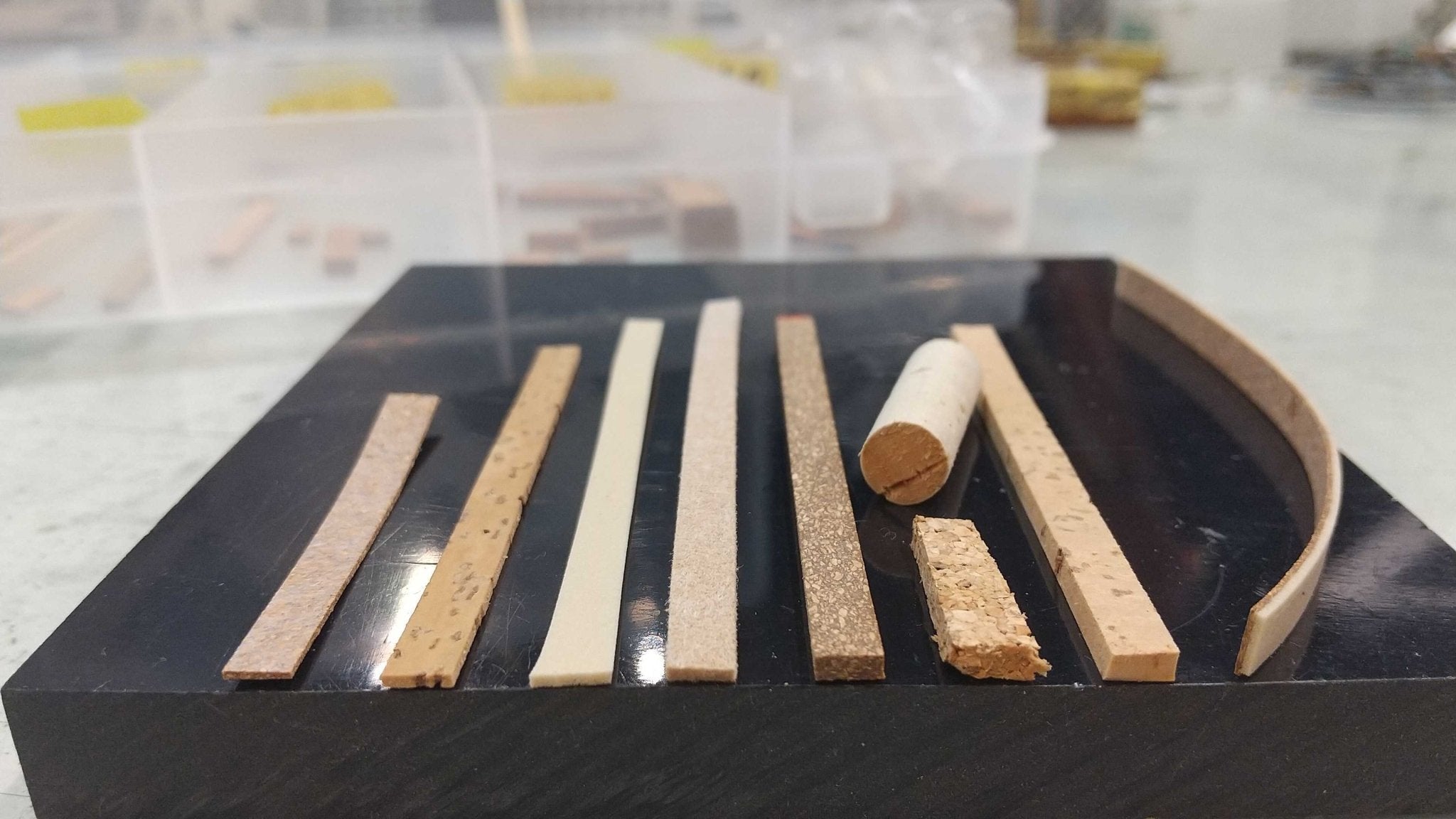Hello!
This is Takechi from Okubo Wind Instrument Store Repair.🎷
Saxophones, like most brass instruments, are made of a metal called "brass".Cork and feltBut did you know that each small part has a cork or felt attached to it? (Did you know that each small part has a cork or felt attached to it?
These materials are necessary for the parts where the kii interlock with each other and where the kii lands on the pipe body, and more than a dozen different materials and thicknesses are used depending on the part to which they are attached...!👀
This time,Craftsman's secret point of interest: types of cork about the type of cork.📖

The photo above shows the back side of the left hand side of an H.Selmer SERIE2 alto saxophone.
white or brown so that the metals do not hit each other.corkand PVC tubing,Green feltetc., are found in many places in this vicinity alone.
What goes where on the key is very important in the tuning process, and the thickness and material are selected according to the make, model, and construction of the key.
To put it extremely bluntly, there are places where a change in thickness of only 1mm can cause the key to float and produce no sound.Please do not imitate me!😱
The photo below shows the corks we mainly use. Each material has its own characteristics,
(Leftmost)Synthetic corkSynthetic cork: Resistant to change even under pressure and does not allow moisture or oil to penetrate. Durable.
(Second from left)Natural corkNatural cork: Easily changes under pressure and soaks up moisture and oil. Cushiony and noise-resistant.

The material and thickness of the cork are selected according to the key (e.g., water easily gets on the cork, force is applied, the ground surface area is wide or narrow, how much opening is desired in the key, etc.). The materials and thicknesses are used accordingly.
However, corks and felts are consumables, so even if you use your instrument carefully, they will deteriorate and become stiff due to perspiration from your hands, moisture, and oil soaked into them over many years of use.
By the time the whole thing makes a clattering noise, there are often other problems that have occurred,We recommend that you take the instrument in for maintenance as soon as possible!🙏
Click here to see a video of the actual touch of the instrument before and after the repair.
The difference is huge! Saxophone repair before and after!
https://youtube.com/shorts/NXhufJyI80U
Which is closer to the state of your saxophone? Please take a look at it as a reference!💁♀🛠

